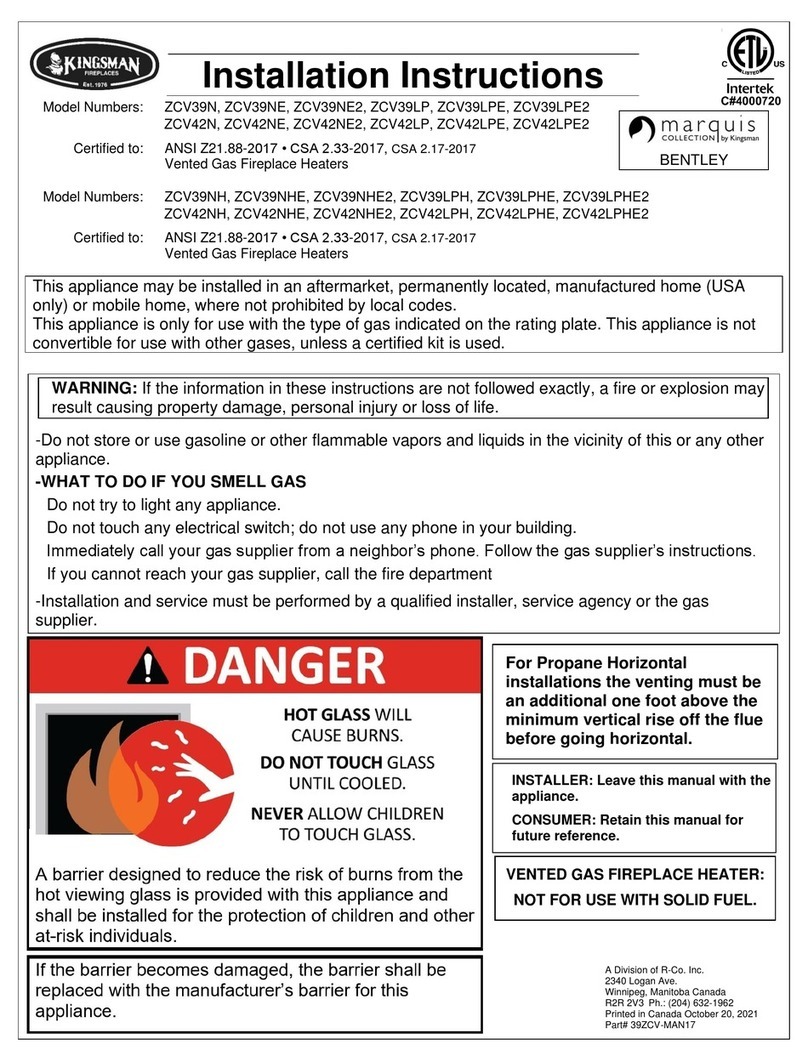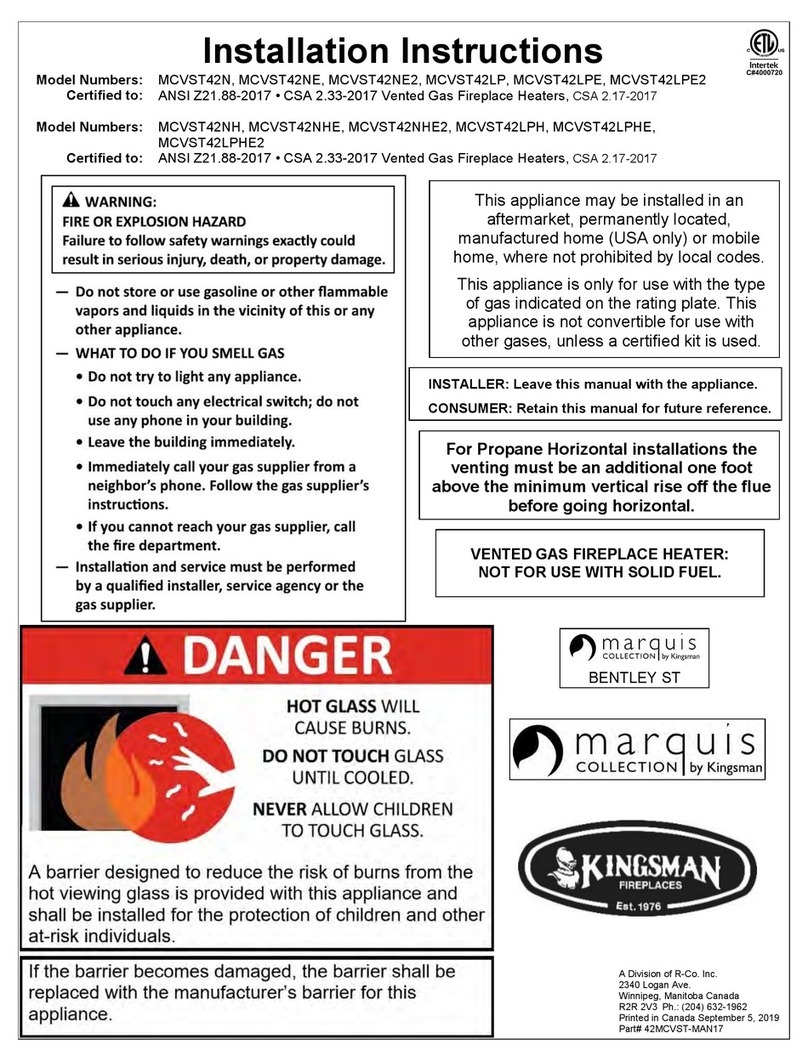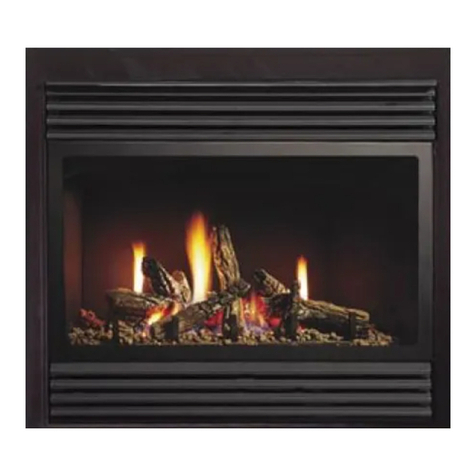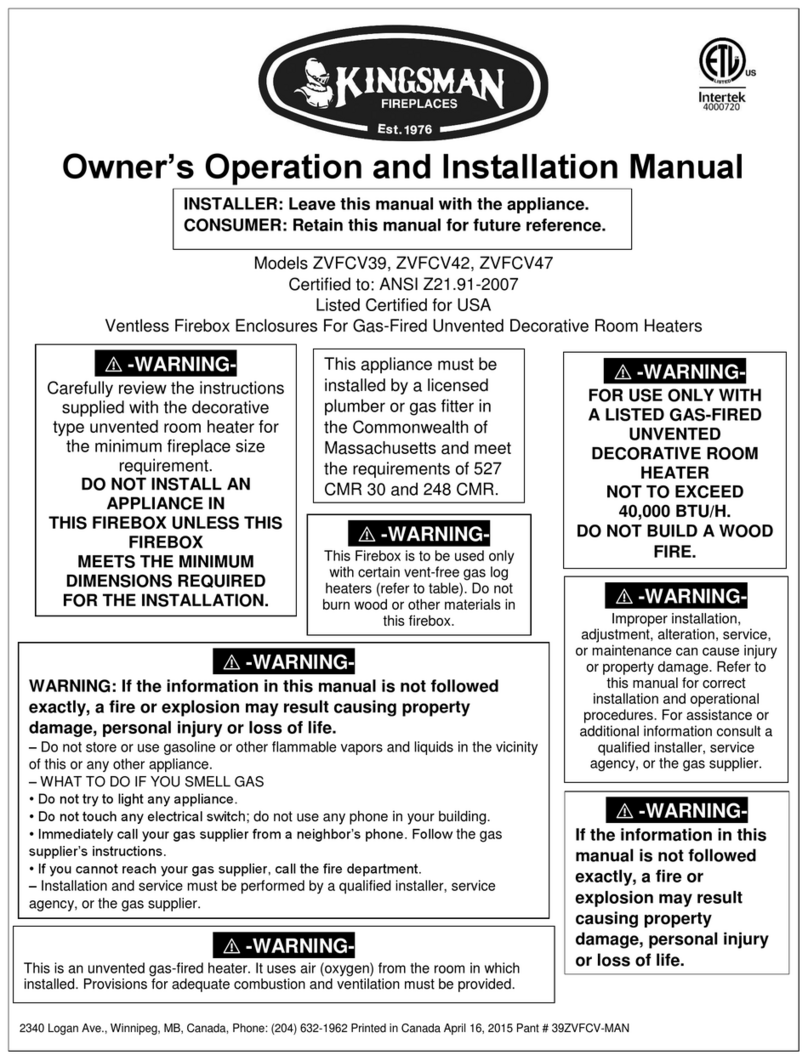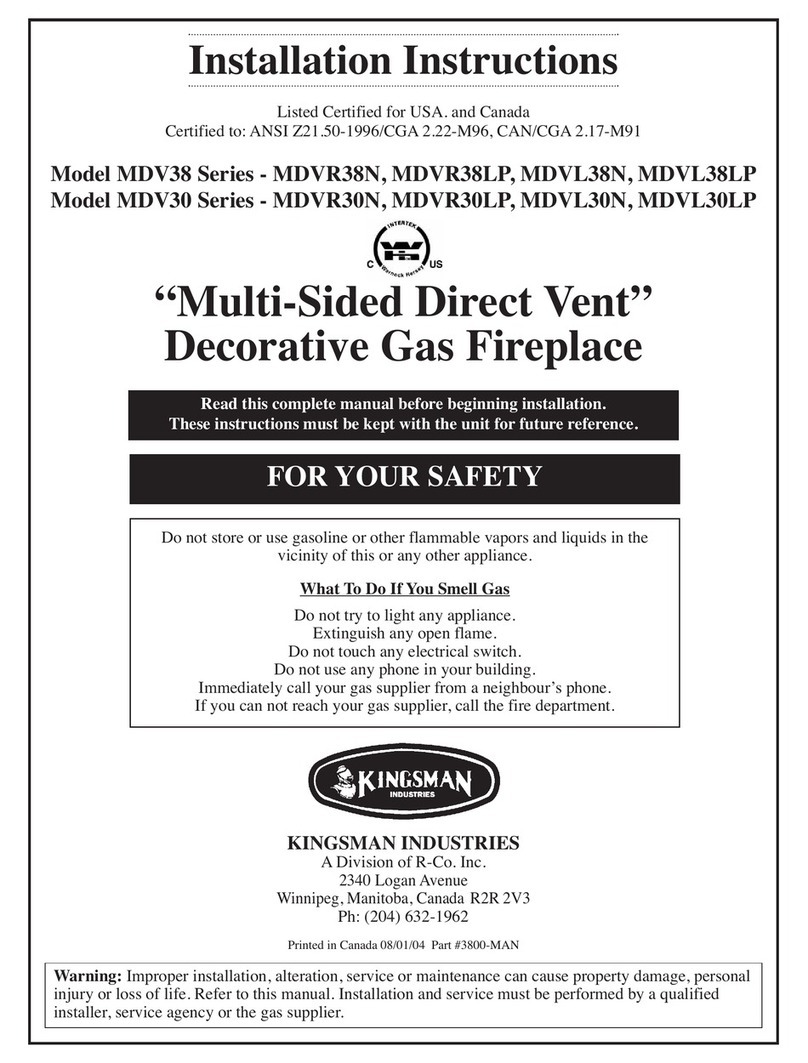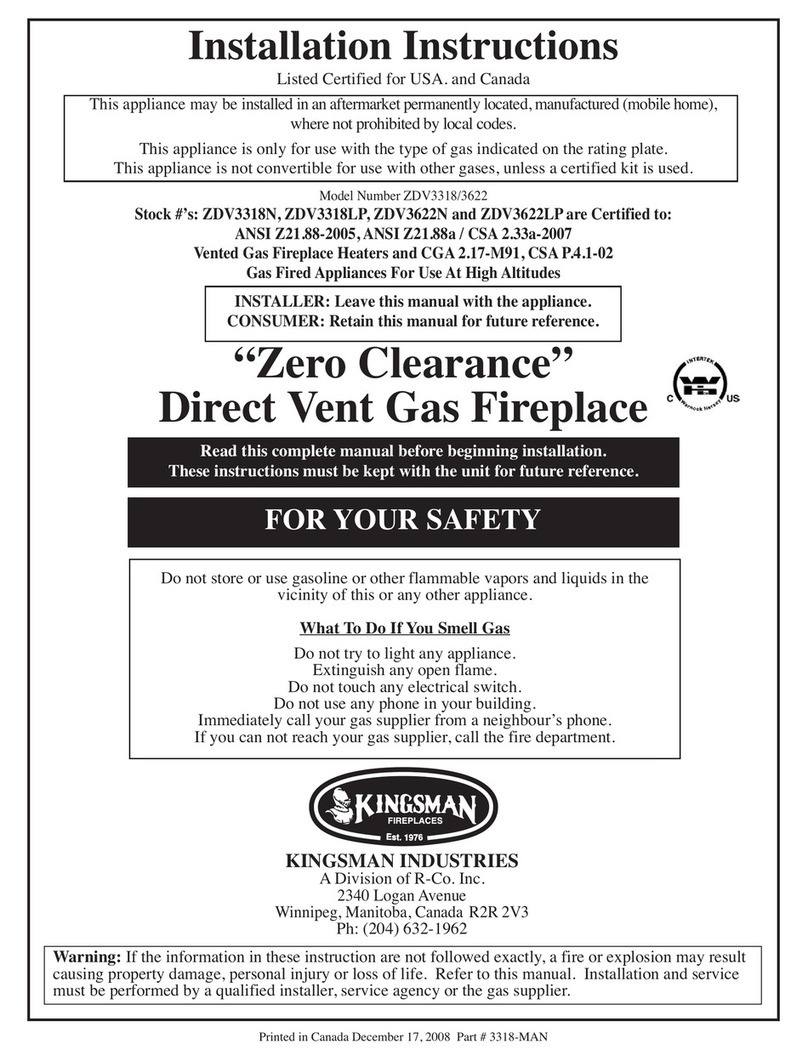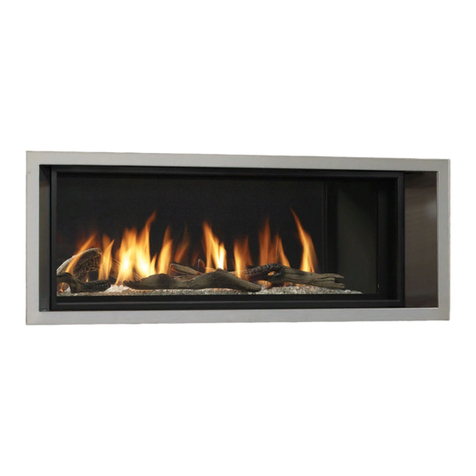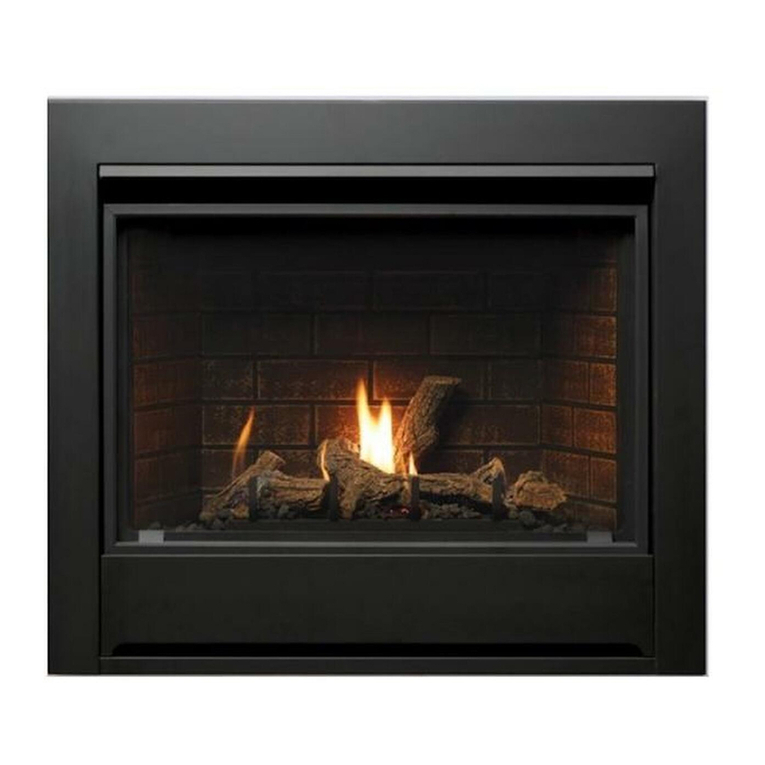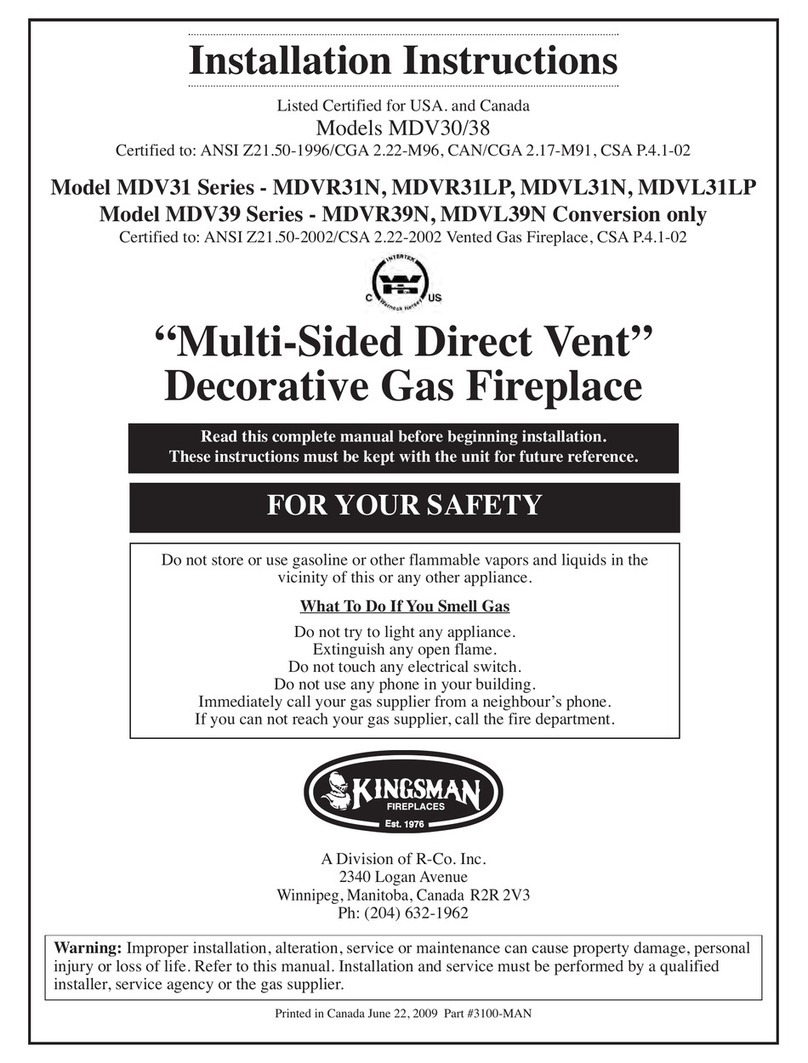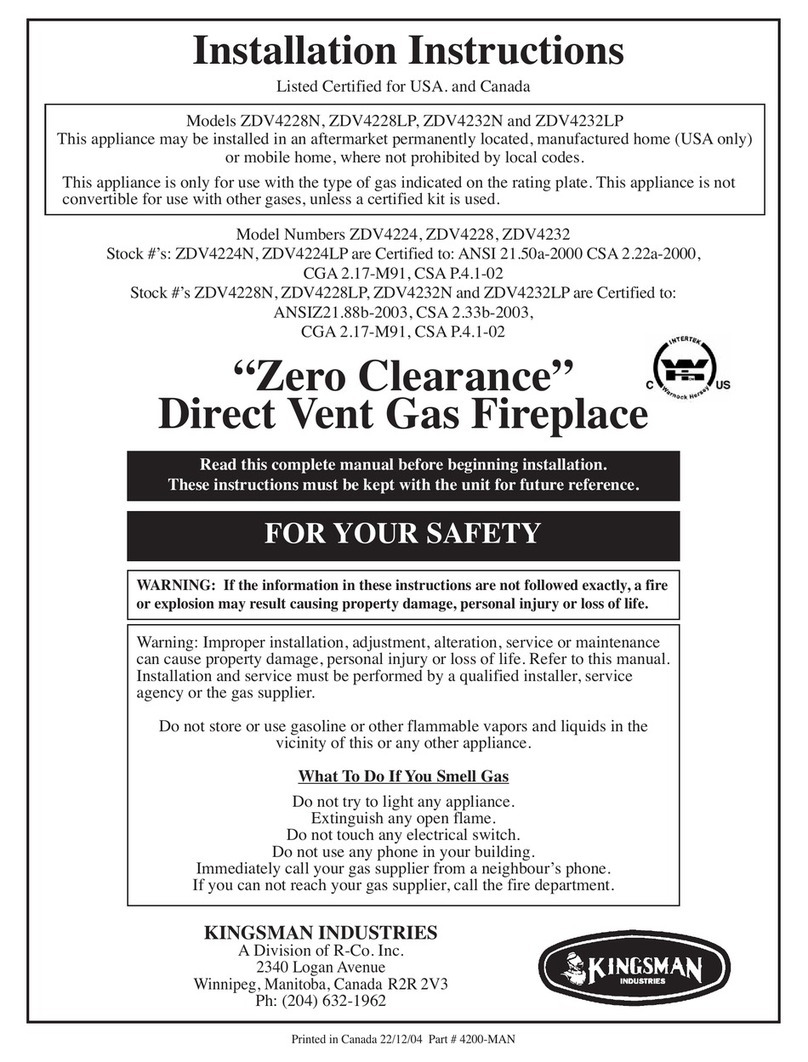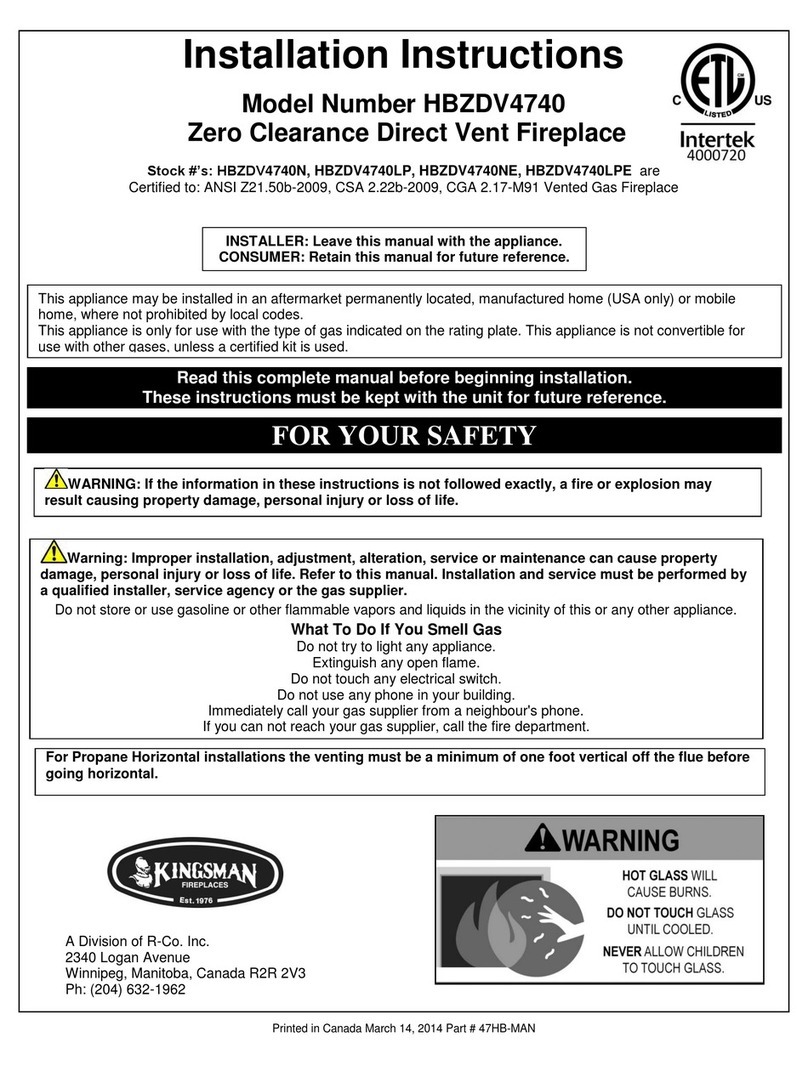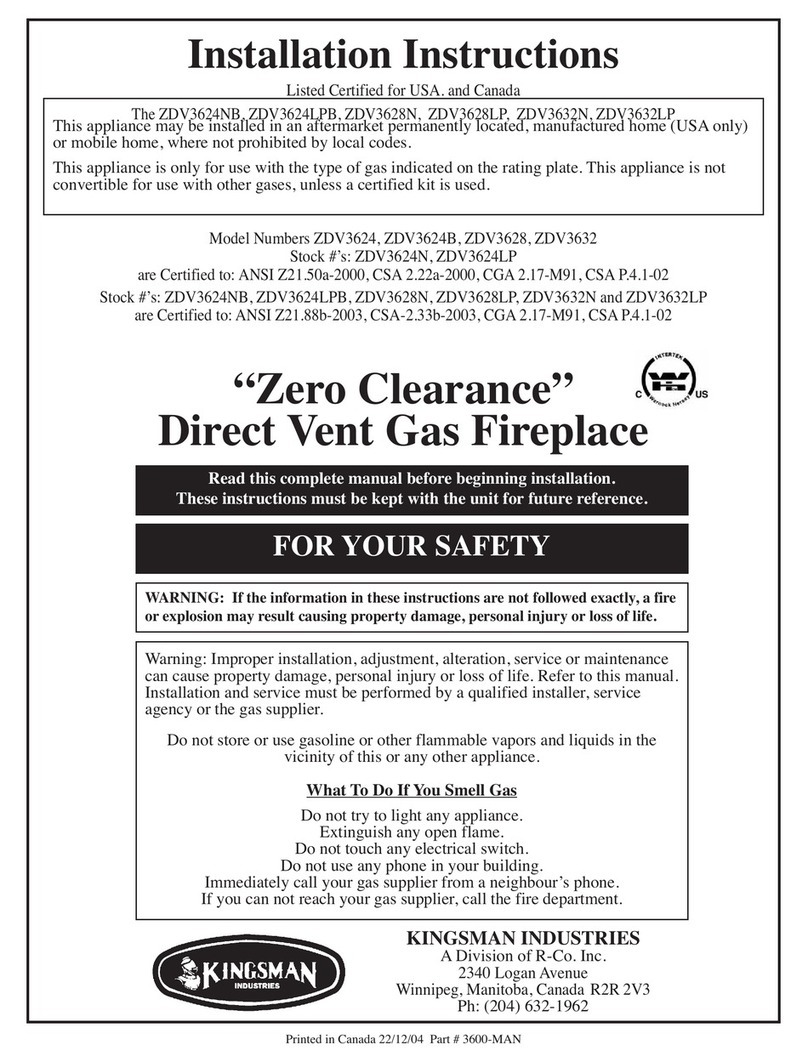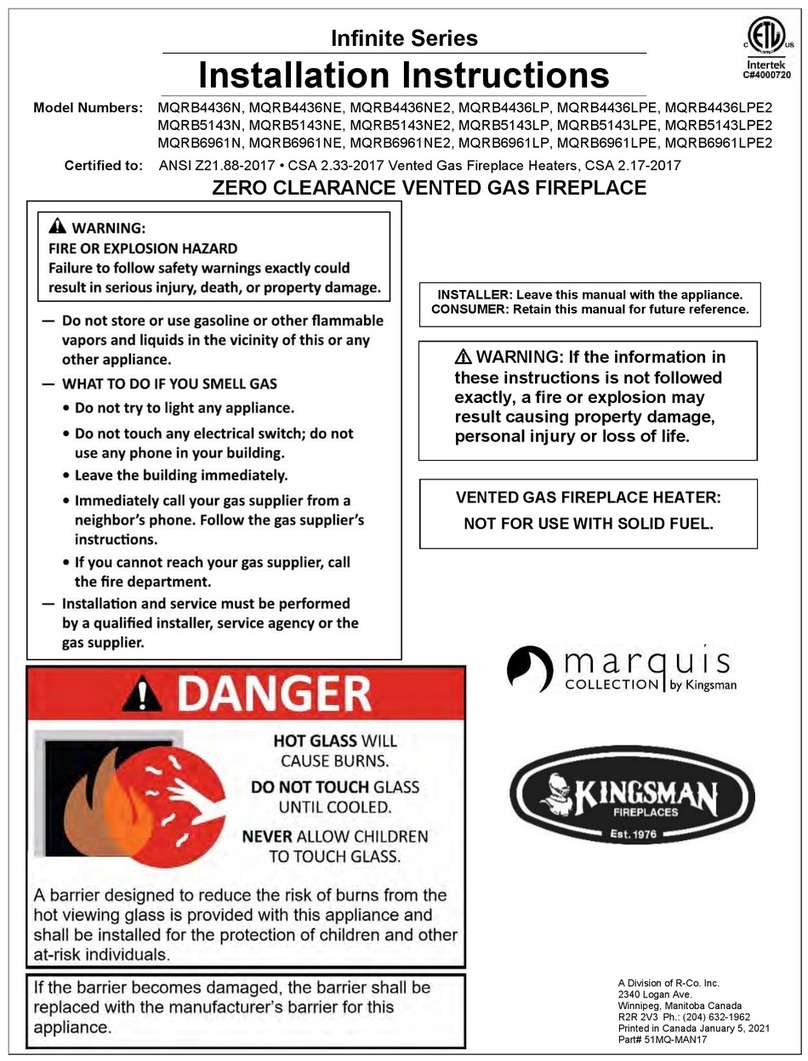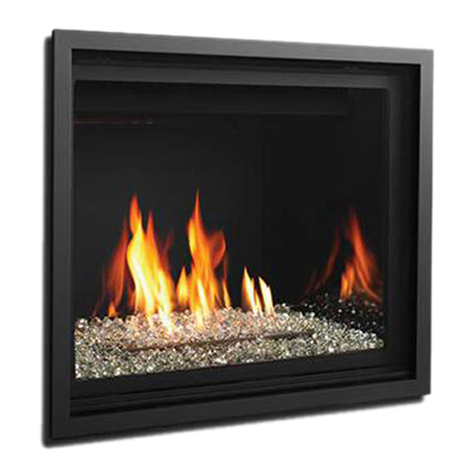5
Installation and Operation
Installation Regulations
This gas appliance must be installed by a qualified installer in accor-
dance with local building codes, or in the absence of local codes, with
the current CAN/CGA-B149.1 or .2 Installation Code (in Canada) or
the current National Fuel Gas Code Z223.1 when installed in the
United States.
This appliance, when installed, must be electrically connected and
grounded in accordance with local codes, or in the absence of local
codes, with the current CSA C22.1 Canadian Electrical Code or with
the national Electrical Code; ANSI/NFPA 70-1987 when installed in
the United States.
FOR SAFE INSTALLATION AND OPERATION OF
YOUR GAS FIREPLACE PLEASE NOTE THE
FOLLOWING:
1. This appliance gives off high temperatures and should be locat-
ed out of heavy traffic areas and away from furniture and
draperies.
2. Children and adults should be alerted to the hazards of the high
surface temperatures of this appliance and should stay away to
avoid burns or ignition of clothing.
3. Children should be carefully supervised when they are in the
same room as your fireplace appliance.
4. Under no circumstances should this appliance be modified. Any
parts that have to be removed for servicing should be replaced
prior to operating this appliance.
5. Installation and any repairs to this appliance should be done by
a qualified service person. A professional service person should
be called to inspect this appliance annually. Make it a practice
to have all your gas appliances checked annually.
6. Control compartments, burners and air passages in this appliance
should be kept clean and free of dust and lint. Make sure that the
gas valve and pilot light are turned off before you attempt to clean
this unit.
7. The venting system (chimney) of this appliance should be inspected
at least once a year and if needed, your venting system should be
cleaned.
8. Keep the area around your appliance clear of combustible materials,
gasoline and other flammable vapors and liquids. This appliance
should not be used as a drying rack for clothing nor should
Christmas stockings or decorations be hung from it.
9. Under no circumstances should any solid fuels (wood, paper) be
used in this appliance.
10. For safe operation, glass doors must be closed.
11. Do not use this heater if any part has been under water. Immediately
call a qualified service technician to inspect the heater and to
replace any part of the control system and any gas control which
has been under water.
12. Do not operate appliance unless completely installed as per
installation instructions.
13. Gas fired appliances may be used only for supplemental heat
and/or decorative purposes and under no circumstances shall
they provide a primary heat source.
Certified for installation in a bedroom or bed/sitting room. In Canada must be installed with listed millivolt thermostat. In USA see local codes
NOTE: It is recommended that a Carbon Monoxide (CO) Detector be installed in or near bedrooms and on all levels of
your home. Place a detector about 15 feet (4.5 meters) outside the room that houses your gas appliance.
Operating and Maintenance Instructions
This gas appliance should be installed by a qualified installer in accor-
dance with local building codes and with current CAN/CGA - B149 (.1
or .2) installation codes for Gas Burning Appliances and Equipment.
For safe installation and operation
note the following:
This appliance gives off high temperatures and should be located out
of heavy traffic areas and away from furniture and draperies.
Children and adults should be alerted to the hazards of high surface
temperatures of this appliance and should stay away to avoid burns
or ignition of clothing.
Under no circumstances should this appliance be modified. Parts
that have to be removed for servicing should be replaced prior to
operating this appliance again.
Installation and any repairs to this appliance should be done by a
qualified service person. A professional service person should be
called to inspect this appliance annually. Make it a practice to have
all of your gas appliances checked annually.
Never use your gas fireplace as a cooking device.
The Burner/Log Assembly has been engineered and permanently
adjusted for proper flame control.
Periodically remove the logs from the grate assembly and vacuum
any loose particles from the grate and burner areas.
Control compartments, burners and air passages in this appliance
should be kept clean and free of dust and lint. Make sure that the
gas valve and pilot light are turned off before you attempt to clean
this unit.
The venting system (chimney) of this appliance should be inspected
at least once a year and if needed, your venting system should be
cleaned.
Keep the area around your appliance clear of combustible materials,
gasoline and other flammable vapors and liquids.
This appliance should not be used as drying rack for clothing, nor
should Christmas stockings or decorations be hung near it.
Under no circumstances should any solid fuels (wood, paper, card-
board, coal) be used in this appliance.
Note: It is normal for your gas fireplace to give off some odor
the first time it is burned. This is due to the curing of the paint
and any undetected oil from the manufacturing process.
Please ensure that your room is well ventilated - open all windows.
It is recommended that you burn your gas fireplace for at least four
(4) hours the first time you use it without the fan on.
Warning: When purging the gas line, the glass front must
be removed.
Do not alter gas orifice.

